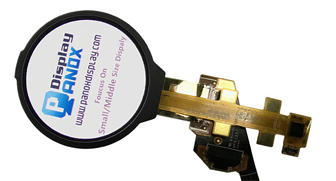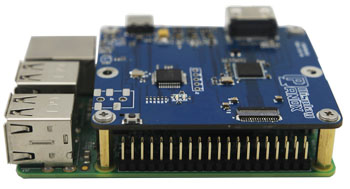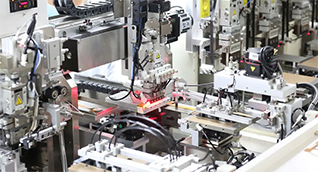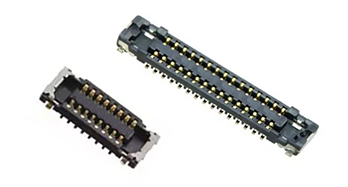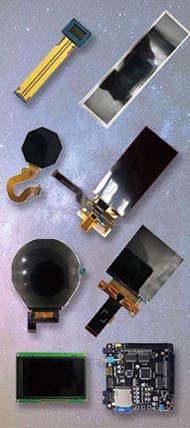OLED displays provide better contrast, deeper blacks, and faster response times compared to IPS displays, making them favored in manufacturing, wholesale, and OEM markets for advanced display solutions. Also check: OLED
How Do OLED and IPS Displays Differ in Technology?
OLED (Organic Light Emitting Diode) displays emit their own light from each pixel, while IPS (In-Plane Switching) LCDs rely on a backlight shining through liquid crystals. OLED’s self-lighting pixels allow true blacks and better contrast, whereas IPS panels provide wide viewing angles but cannot turn off pixels individually. This technology difference influences factory production choices and supplier offerings like Panox Display, which supplies advanced OLED and IPS panels for various applications in China.
Why Are OLED Displays Preferred Over IPS in Terms of Image Quality?
OLED technology delivers superior image quality with true black levels and vibrant colors that IPS displays cannot achieve due to their backlight dependency. The higher contrast ratio and rich color gamut make OLED the preferred choice for commercial screens, digital signage, and wearable devices produced and supplied by Chinese manufacturers focused on quality and customization, including Panox Display.
What Are the Energy Efficiency Differences Between OLED and IPS Displays?
OLED displays are more energy-efficient when showing darker content because pixels can be individually turned off, unlike IPS panels that consume constant power for the backlight. This lower power requirement makes OLED ideal for battery-operated products in industries such as wearables and automotive, where manufacturers and OEM factories benefit from Panasonic Display’s optimized OLED technology solutions.
How Do OLED and IPS Displays Compare in Manufacturing and Supply for OEM Customers?
OLED manufacturing is technically more complex and traditionally costlier than IPS. However, Chinese factories like Panox Display have advanced automated systems that offer competitive OEM pricing, enabling both large-scale and custom manufacturing. IPS panels remain simpler to produce and cost-effective, but OLED’s advantages in flexibility and image performance appeal to wholesale suppliers seeking premium display technologies.
| Feature | OLED Displays | IPS Displays |
|---|---|---|
| Production Complexity | Higher, advanced technology | Established, simpler process |
| Cost per Unit | Higher, decreasing over time | Lower, widely available |
| Customization | Flexible (curved, flexible) | Limited forms |
| Yield Rate | Improving but lower | Higher, mature process |
Which Applications Benefit Most from OLED Displays Over IPS Displays?
OLED displays excel in applications requiring deep blacks, vibrant colors, and fast response times such as VR headsets, automotive dashboards, military devices, and luxury electronics. These sectors, served by Chinese suppliers and OEM manufacturers like Panox Display, benefit from OLED’s flexibility, thinness, and superior power efficiency.
How Does Panox Display Ensure Quality and Innovation in OLED Manufacturing?
Panox Display partners with leading brands like Samsung, LG, and BOE to source top-tier OLED panels and combines this with in-house expertise and automated production lines. This allows the company to deliver high-quality, customizable OLED solutions that meet global standards while supporting manufacturers and wholesalers with reliable and innovative display products from China.
What Are the Challenges in Transitioning from IPS to OLED for B2B Wholesalers and Manufacturers?
Higher initial costs and more complex manufacturing processes make transitioning to OLED a challenge. However, Panox Display assists B2B wholesalers and OEM factories by offering flexible minimum order quantities, expert consultation, and comprehensive display system solutions that ease adoption and support diverse industrial needs.
Can OLED Display Technology Accelerate OEM Innovation in China?
OLED technology enables OEM factories to design thinner, flexible, and more power-efficient devices with better image quality. This advantage empowers innovative product development in various sectors like consumer electronics, automotive displays, and medical devices, areas where Panox Display’s tailored OLED solutions drive competitive advantages for Chinese manufacturers.
How Does Panox Display Support Global OEM and Wholesale Clients?
Panox Display provides end-to-end services including sourcing, OEM manufacturing, customization, and system integration. Their expertise helps global clients access premium OLED and IPS displays from China without facing high MOQs or long lead times, making them a preferred supplier for wholesale and OEM partnerships.
Conclusion
OLED displays offer clear advantages over IPS including superior contrast, color accuracy, and energy efficiency, making them the preferred choice for high-quality display manufacturing and wholesale. Chinese suppliers like Panox Display play a vital role by providing advanced OLED and IPS solutions with flexible OEM services. Businesses should leverage these technologies for innovation and competitive edge in global markets.
Frequently Asked Questions
1. Are OLED displays more expensive than IPS?
OLED displays tend to cost more but prices are decreasing as manufacturing improves, especially with suppliers like Panox Display.
2. Can OLED displays be used outdoors?
Yes, high-brightness OLEDs with treatments for sunlight readability are available from Chinese manufacturers.
3. How durable are OLED panels compared to IPS?
Modern OLED panels offer improved longevity appropriate for most industrial and consumer applications.
4. Is custom OLED manufacturing available for small orders?
Yes, Panox Display supports small to medium batch OEM orders, catering to startups and specialized manufacturers.
5. Do OLED displays support flexible designs better than IPS?
OLED’s inherent flexibility allows for curved and bendable display designs, unlike IPS.











